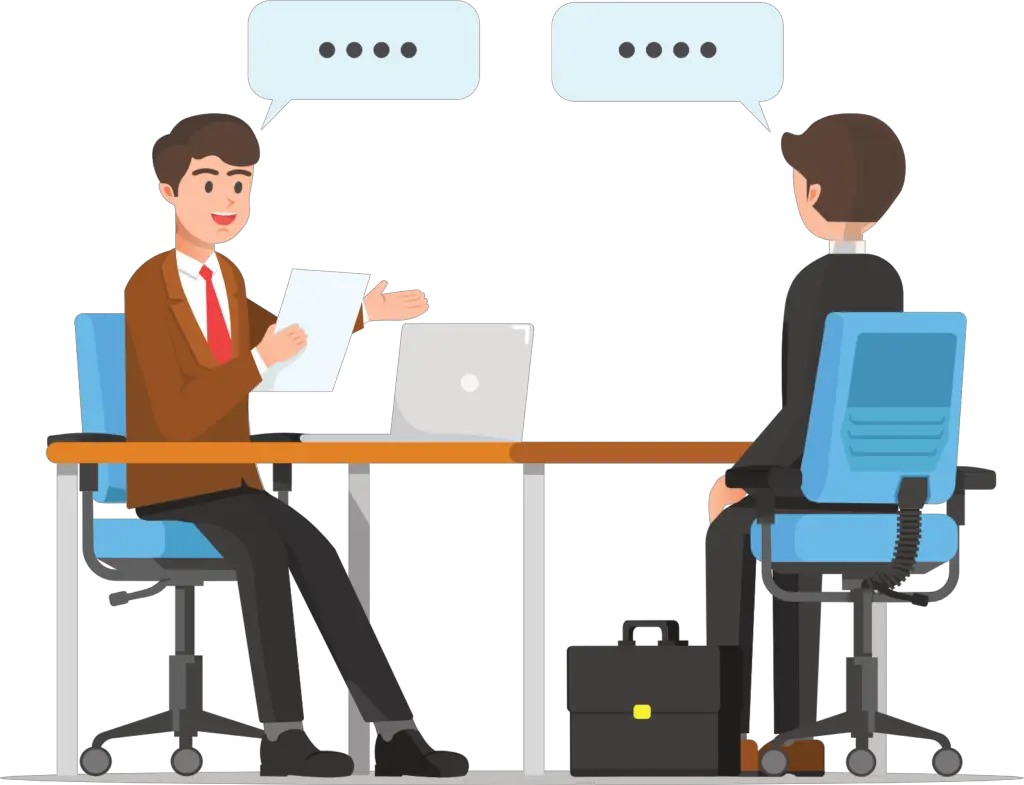Politely Ask for Clarification – Introduction
Misunderstandings happen – even among native English speakers. If you’re using English at work and don’t quite understand something in a conversation, meeting or email, you’re not alone. However, many professionals hesitate to speak up. Why? Often, it’s the fear of sounding rude, unprofessional or simply “not good enough.”
Here’s the truth: asking for clarification is a sign of strength, not weakness. It shows that you’re paying attention, care about getting things right and are confident enough to seek clarity.

In this article, we’ll look at how you can ask for clarification politely and professionally in English – whether you’re in a meeting, on a video call or reading an unclear email. You’ll find practical phrases, examples and tone tips to help you feel more confident and competent at work.
This article builds on two earlier guides: 👉 Active Listening Skills for English 👉 The Power of Active Listening: How to Improve Your Understanding in English. If you haven’t read them yet, they’re worth a look.
Why Asking for Clarification Matters
Think of clarification as a tool, not a flaw. If you misunderstand a task, a deadline or an instruction – and don’t ask – the results could be costly. But asking a polite follow-up question can prevent confusion, build trust and even make you look more professional.
Remember: good communicators aren’t those who never ask questions – they’re the ones who ask the right questions, at the right time, in the right way.
Useful Phrases for Asking Politely
You don’t need to sound like a dictionary. You just need a few ready-made phrases that show respect, curiosity and professionalism.
Here are some examples to keep in your toolkit:
✅ General Clarification
- “Sorry, could you say that again?”
- “I didn’t quite catch that – would you mind repeating it?”
- “I just want to make sure I understood – could you go over that once more?”
✅ Clarifying a Specific Point
- “When you said ‘streamline the process’, what exactly did you mean?”
- “Just to clarify, are we expected to complete the report by Friday or Monday?”
- “Do you mean that we should update the system now, or wait for approval?”
✅ In More Formal Settings (Emails or Presentations)
- “Would you mind clarifying what you meant by ‘phase two implementation’?”
- “Could you expand a little on the expected outcomes for this quarter?”
- “I’d appreciate a bit more detail on how that will affect our team’s workflow.”
What to Say During Video or Phone Calls
Remote meetings can make everything harder: poor audio, overlapping voices or unfamiliar accents. If you miss part of the message, stay calm and polite.
Try these:
- “Apologies, I think the sound cut out for a moment – could you repeat the last point?”
- “I heard most of that, but could you clarify the timeline you mentioned?”
- “Sorry, I think I lost connection for a second. Could you just go over that again?”
Tip: If it keeps happening, it’s OK to suggest switching to email or chat for key points.
Body Language and Tone Matter
Words are just part of the picture. How you ask for clarification also depends on:
- Facial expressions: Look attentive, not annoyed or blank. A small smile and eye contact help.
- Tone: Sound curious, not confrontational. Use a light tone – you’re seeking help, not pointing out a problem.
- Pacing: Avoid blurting out your question. Pause briefly, then speak calmly.

Even in written messages, tone comes through. Phrases like “just to clarify” or “could you please” make a big difference.
What Not to Say
Some phrases, while honest, can come across as abrupt or rude:
- 🚫 “What?”
- 🚫 “That doesn’t make sense.”
- 🚫 “You’re not being clear.”
These can put the other person on the defensive. Instead, take responsibility for your understanding:
- ✅ “I may have misunderstood – could you explain that again?”
- ✅ “I’m not quite sure I follow. Could you clarify that part?”
Workplace Scenarios and Model Responses
Let’s look at how these ideas work in real conversations.
💼 Example 1: Team Meeting
Manager: “We need to shift the onboarding flow before Q3.” You: “Just to clarify – by ‘shift’, do you mean adjust the current steps or delay the whole schedule?”
💻 Example 2: Video Call with a Client
Client: “Let’s circle back to that once we’ve finalised stage three.” You: “Sure – just to be clear, would you like us to hold off on development until stage three is complete?”
📧 Example 3: Confusing Email
Email: “Please align with regional partners ahead of the rollout.” You (in reply): “Thanks – could you confirm which regional partners we should reach out to, and by when?”
Tips for Practising Clarification Skills
You can improve this skill even outside of work.
Try:
- Listening to podcasts or TED Talks: Pause and ask yourself, “What did they mean by that?”
- Shadowing techniques: Repeat short phrases after the speaker and rephrase them in your own words.
- Writing your own clarification questions after reading or listening to something complex.
The more you practise, the more natural it will feel.
Final Thoughts
If you’re using English at work, knowing how to ask for clarification politely is just as important as understanding what’s being said. It builds respect, ensures accuracy and shows that you’re a thoughtful, active participant – not just a passive listener.
And if you’re serious about improving your English for the workplace, don’t do it alone.
👉 Check out the earlier articles in this series: Active Listening Skills for English, The Power of Active Listening: How to Improve Your Understanding in English
💬 Want more personalised support? Join our growing community for professionals who are learning English – where you can practise, get feedback and gain the confidence to speak up in any business situation.


